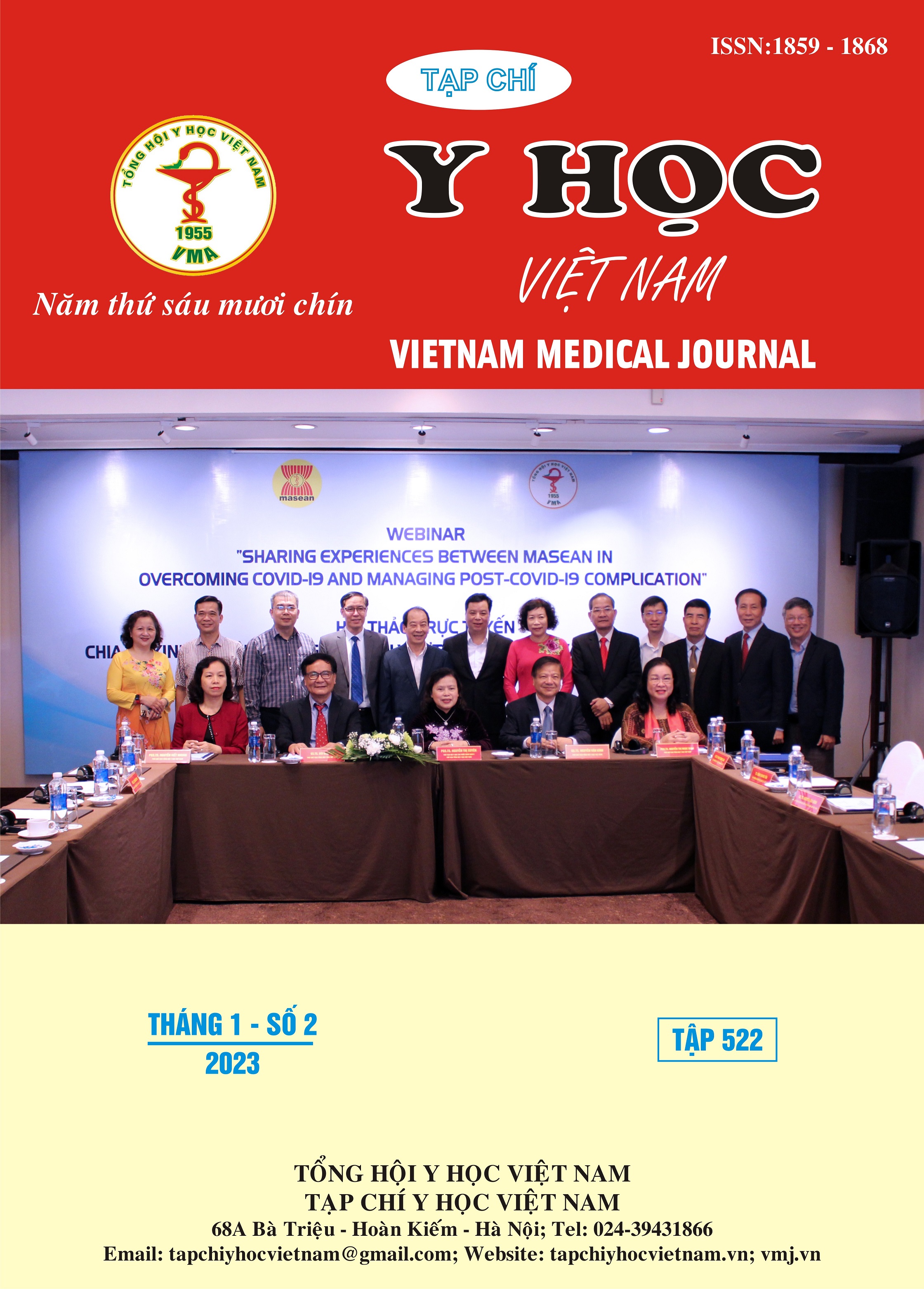ARRHYTHMIA DETECTION BY 24-HOUR HOLTER MONITORING OF PATIENTS
Main Article Content
Abstract
Background: Basedow is associated with many arrhythmias. Some of these disorders, such as atrial fibrillation (AF) can be the cause of thrombosis, embolism, and death in Graves' patients. Objectives: Describe the characteristics of arrhythmia and some related factors on 24-hour Holter monitoring in Graves' patients at Bach Mai hospital. Methods: We performed a descriptive study on 62 patients with Graves. Clinical, biochemical and therapeutic characteristics were collected from the medical records. 24h Holter monitoring was performed for all patients. Results: Mean age was 41.3±17.1 years old; male rate 40.3%, mostly new cases Basedow (58.1%). All patients had laboratory hyperthyroidism (mean FT4: 67.1±64.5pmol/l; mean TSH 0.009±0.005µU/ml). On 24h Holter 24h monitoring: average heart rate was 90.1 ± 16.2 beats/min; Atrial fibrillation 82.3%, sinus tachycardia 83.9%, atrial fibrillation 16.1%, atrial flutter 1.6%, paroxysmal supraventricular tachycardia 3.2%; ventricular ventricular failure 11.3%; Unsustainable ventricular tachycardia 6.5%. The rate of atrial fibrillation was statistically significantly higher in patients ≥ 60 years old, FT4 grade ≥ 100pmol/l; TSH < 0.005 µU/ml, TRAb > 20IU/L. Conclusion: Hyperthyroidism increases heart rate and can cause arrhythmia, mainly atrial fibrillation. This complication is more common in elderly patients, with high FT4 and TRAb levels, and low TSH.
Article Details
Keywords
Basedow, hyperthyroidism, arrhythmia, 24 Holter 24-hour monitoring.
References
2. Iwasaki T, Naka M, Hiramatsu K, et al. Echocardiographic Studies on the Relationship between Atrial Fibrillation and Atrial Enlargement in Patients with Hyperthyroidism of Graves’ Disease. Cardiology. 1989;76(1):10-17.
3. Wei D, Yuan X, Yang T, et al. Sudden unexpected death due to Graves' disease during physical altercation. Journal of forensic sciences. Sep 2013;58(5):1374-1377.
4. Stawiarski K, Clarke J-RD, Pollack A, Winslow R, Majumdar S. Ventricular fibrillation in Graves disease reveals a rare SCN5A mutation with W1191X variant associated with Brugada syndrome. HeartRhythm Case Rep. 2020;7(2):95-99.
5. Bảy NQ. Nghiên cứu một số yếu tố liên quan đến rung nhĩ ở bệnh nhân cường giáp và đánh giá kết quả điều trị. Luận văn Tiến sĩ y học, Đại học Y Hà Nội. 2017.
6. Turan E, Can I, Turan Y, Uyar M, Cakır M. Comparison Of Cardiac Arrhythmia Types Between Hyperthyroid Patients With Graves' Disease And Toxic Nodular Goiter. Acta Endocrinol (Buchar). Jul-Sep 2018;14(3):324-329.


